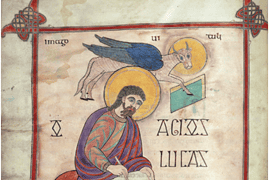Late yesterday I posted my first YouTube video of 2024–which is #3 of my new series I am calling “Jesus Archaeology.” It already has over 4K views in less than 24 hours.
The video has to do with the “Forgotten City of Sepphoris,” on a very basic level. Many of you have read my books and are more familiar with my work in general, so you know something about Sepphoris and my work there with the late Dr. Jim Strange–my mentor as I began “doing” archaeology 30 years ago. He was one of a kind and there will never be another like him–brilliant, kind, learned, creative, and hard working. The new ASOR center is named after him…and yet his degree was in New Testament. He fully integrated material evidence into his study of Jesus and his movement.
No Jesus tour of the Holy Land is complete with our a focused visit to Sepphoris, but alas, most “Christian tours” skip it for Nazareth–and miss out on what might be the most important site of all as related to the historical Jesus. Was he a poor, illiterate, tinerant day labor–a “Mediterranean peasant,” as my friend Crossan called him–or a rather sophisticated Jewish teacher who was comfortable in an sophisticated urban Greco-Roman cultural context. I think there is strong evidence for the latter, and Sepphoris is part of that story.
Anyway, in the video I recommend Richard Batey’s book1991 popular book, Jesus and the Forgotten City: New Light on Sepphoris and the Urban World of Jesus, which I highly recommend–even just for the color illustrations. I just added it to my Bookshelf on my blog: https://jamestabor.com/book-recommendations/.
If you like the video please hit the “Like” button and Subscribe to the channel if you have not. Also, since this is #3 of the new series, be sure and go back and view the first two as well as the Introduction where I lay out what I intend to cover in the series and why it is important. The first offers a survey of Ten Jerusalem tombs and the “tales they tell.” The second focuses on a particular ossuary that may have belonged to Simon of Cyrene and his son Alexander, the one whom Mark identifies as the man who carried Jesus’ cross.









Comments are closed.